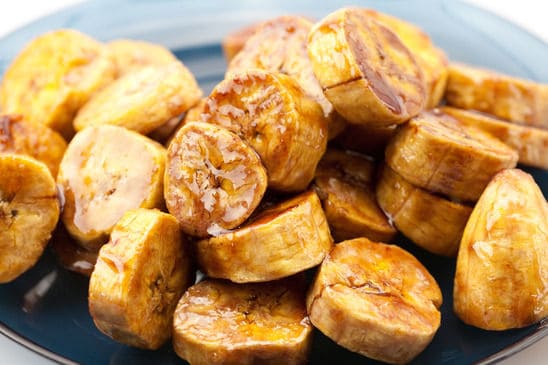

Self-proclaimed foodies frequently swoon at the hint of carmelization, the dark brown color that emerges as foods are cooked at high temperatures. While many treasure the taste profile of foods that are seared, broiled, toasted, grilled and fried, there is some evidence that the chemical reaction behind carmelization can put people on a road to a host of health problems.
Carmelization
Used extensively in cooking to obtain a rich, sweet, savory or nutty flavor, carmelization involves the oxidation of sugar. A type of non-enzymatic browning reaction, cooking with high heat releases volatile chemicals that can produce a characteristic caramel flavor. This browning reaction involves the removal of water (as steam) and the degradation of sugar. Unfortunately, cooking foods at a high temperature without the presence of water is likely to form advanced glycation end products (AGEs).
AGEs
AGEs are the end-products of glycation reactions, in which a sugar molecule bonds to either a protein or lipid molecule without an enzyme to control the reaction. When proteins are cooked with sugars in the absence of water, like when food is carmelized, AGEs are formed. The types of proteins that can undergo glycation reactions are not exclusive; they can include meat, poultry, fish, vegetables, fruit and grains.
Regrettably, AGEs have been linked to aging and many kinds of chronic health issues. Although the body can handle AGEs, it does so very slowly. The half-life of AGEs is about double that of the average cell life, meaning that damage can persist for an extended period of time. Adding another reason to minimize AGEs, recently published research indicates that ingestion of AGEs appears to encourage insulin resistance.
Insulin Resistance
A precursor to Type 2 diabetes and a component of metabolic syndrome, insulin resistance is a condition in which the body’s cells become resistant to the hormone insulin. Associated with obesity, a fatty liver, arteriosclerosis, heart disease, skin tags, polycystic ovaries and several other health problems, insulin resistance is a growing public health issue.
Produced by the beta cells of the pancreas, insulin is released into the blood stream to convert glucose into energy. Insulin resistance manifests when the body’s cells no longer respond to the effects of insulin, allowing blood sugar levels to remain elevated. High blood glucose levels can have many deleterious consequences – the most common of which is diabetes and heart disease.
The Link Between Carmelization, AGEs and Insulin Resistance
New research from Denmark has found that cooking at high temperatures (such as inducing carmelization) increases the risk of insulin resistance via AGEs. As published in an August 2013 edition of Diabetes Care, researchers investigated the effects of consuming foods cooked at high temperature (high-AGE) or low temperature (low-AGE) on the development of markers of insulin resistance among overweight women. Patients randomized to a high-AGE diet were instructed to fry, bake, roast or grill their food; those in the low-AGE group were told to boil or steam their food. Compared with the women consuming the low-AGE diet, those on the high-AGE diet showed much greater biological markers of insulin resistance.
Avoiding AGEs
In truth, complete avoidance of AGEs is near impossible – as there is a vast pool of AGE sources. However, experts insist that carmelizing food is one of the surefire ways to increase our AGE consumption.
Avoiding all foods cooked at high heat poses a significant challenge for most gourmands. Luckily, awareness of the connection between carmelization and insulin resistance can lead people to make better food preparation choices. Healthier options include:
- Consuming raw fruits and vegetables
- Boiling
- Steaming
- Cooking meats low and slow
If you eat foods that are cooked at high heat infrequently, your AGE levels are likely low enough for the body to effectively eliminate them. But if searing your proteins, carbs and veggies is your mainstay, you may be at risk of insulin resistance. Working towards incorporating some of the low-heat cooking methods described above may help improve your cells’ ability to use insulin, thus reducing your risk of several chronic diseases.




